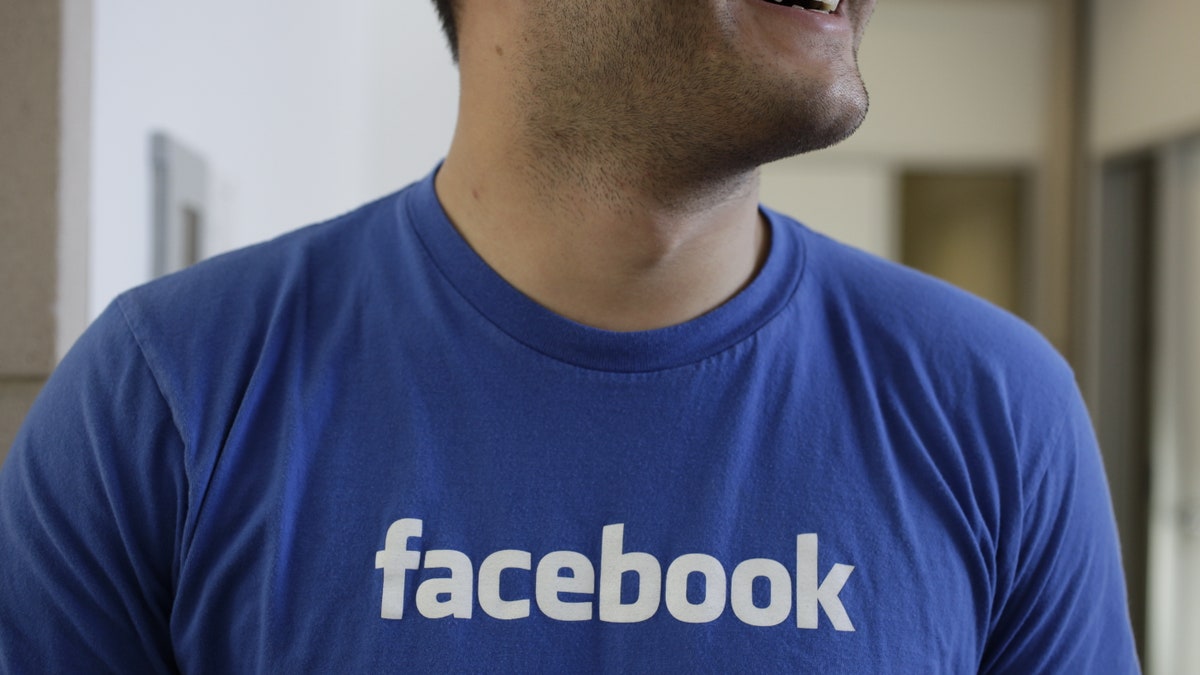
Feb. 8, 2012: A Facebook worker smiling inside Facebook headquarters in Menlo Park, Calif. (AP Photo/Paul Sakuma)
A simple election-day message on Facebook -- which showed users the faces of some friends who had voted -- was enough to get at least a third of a million extra people to the polls during the 2010 Congressional elections.
In the largest experiment of its kind, the new study demonstrated that social networks can motivate people to take political action. Along with other evidence, the findings suggest that applications like Facebook might become powerful tools for influencing behaviors of all kinds, including what people decide to buy or how much time they devote to exercise.
And while seeing a get-out-the-vote message appeared to directly inspire some people to act, a much bigger influence came from the spread of an endorsed message to friends and friends of friends.
PHOTOS: Shockingly Close Presidential Elections
[pullquote]
For every person who decided to vote because he or she saw a voting-related message on Facebook, four additional friends headed to the polls as well, because of what they heard either on or off of Facebook.
"Results showed that a single message directly mobilized millions of acts of online political communication and information seeking," said lead author James Fowler, a political scientist at the University of California, San Diego. "You get this large multiplier effect that can spread up to three degrees of separation."
"There has been a lot of interest in how online behavior affects other online behaviors, and there has been a lot of interest in how real-world behaviors affect other real-world behaviors," he added. "This is the first study to show that online social networks can affect real-world behaviors at a scale that's potentially important."
On Election Day in 2010, Fowler and colleagues enlisted Facebook's help in conducting a massive experiment involving more than 60 million users of the site, aged 18 or older.
When people logged on to check their News Feed that day, most saw a message at the top of the screen that said, "Find your polling place on the U.S. Politics Page and click the "I Voted" button to tell your friends you voted."
Users could click on a link to find out where to vote, and they could hit the "I Voted" button to display it on their own walls. A ticker showed how many Facebook users had reported voting that day. This version of the message also included the faces of up to six random friends who had already hit the button.
Another randomly assigned group of users saw the same message with a link to poll locations, voter tally and an "I Voted" button, but without any pictures of their friends. A final group didn't see any voting-related messages at all.
NEWS: Your Facebook Post Can Get You Robbed
The researchers counted how many people clicked the link and the button. For about 10 percent of people included in the study, they also used publicly available voter records to evaluate whether users who clicked the button actually voted.
All data was collected anonymously and analyzed as a group to protect the privacy of users.
People who saw the voting message along with pictures of friends who had voted were 2 percent more likely to say they voted and close to half a percent more likely to actually vote compared to people who saw the message without added peer pressure from icons of their friends, the researchers report today in the journal Nature. Turnout was the same for people who saw the picture-free version as it was for those who saw no message at all.
"For every person you get to the polls, you get four additional friends to the polls," Fowler said. "If you're not measuring what's going on in the social network, I think you're missing the whole story."
Those percentage points may seem like small margins, but simply seeing that their friends had voted directly increased the number of people who went to the polls by 60,000. When the team looked at friends and friends of friends, they found that messages with the added social pressure accounted for another 280,000 votes.
That's a total of more than a third of a million people who voted either directly or indirectly due to a simple Facebook message. Because a lot of people who saw the message had already voted or were too far away from polling places to vote, Fowler suspects the numbers could have been even higher.
NEWS: Why Do Negative Political Ads Work?
Social messages worked the same way on everyone in the study whether they described themselves as conservatives, liberals, Republicans or Democrats. Across the board, close friends had a bigger influence on users' behavior than did weaker links.
The new findings illustrate the potential of social networks to influence all kinds of behaviors, said Sinan Aral, a managerial economist and network scientist at New York University's Stern School of Business.
One obvious application would be for companies to eschew direct marketing and instead work on convincing potential customers to recommend products to their friends.
On the flip side, Aral and colleagues are working on ways to use social networking to promote HIV testing in South Africa. Other possibilities for intentional contagion include exercising more, quitting smoking and being happier, among other moods and behaviors that affect mental and physical health.
"Five years ago, none of these things existed," said Aral, referring to Facebook, Twitter, Foursquare and related programs. "Now, each of these companies sends trillions of digital signals every day to billions of people."
"This study as well as others in the past show that these types of digital social signals can actually change people's behavior," he added. "Our understanding of that process can help us stage network interventions to promote positive behaviors or contain negative ones."
